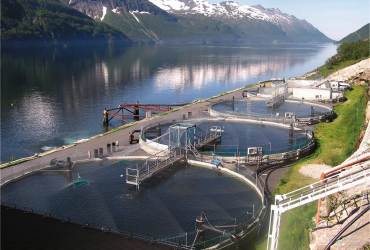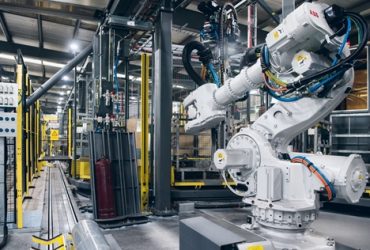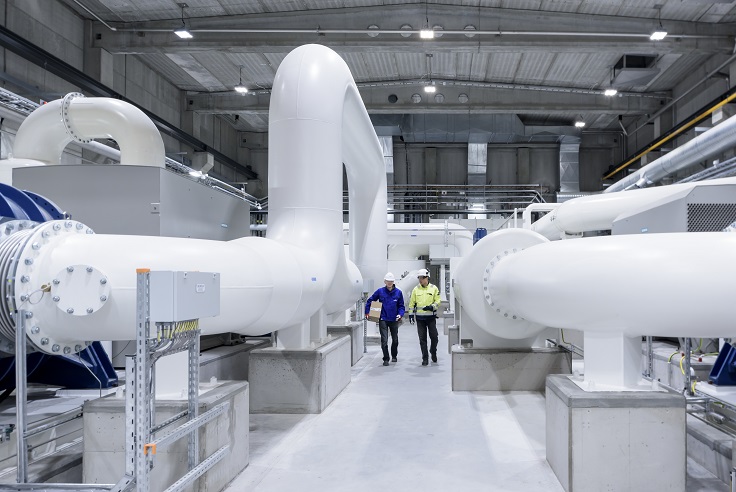
One of the biggest oxygen plants in the world guarantees critical oxygen supply for Metsä Group’s bioproduct mill
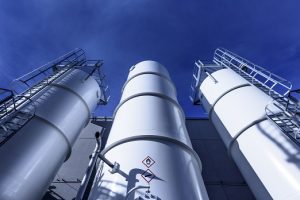
Äänekoski in Finland, has been a well-known pulp and paper area already from the 1980’s – since the time of the Äänekoski Paper Mills. In addition to the recently built oxygen plant, Linde Europe North (former AGA) also has a nitrogen plant in Metsä Fibre’s bioproduct mill area. The nitrogen plant built for CP Kelco was completed in the spring of 2016, and it started production when the bioproduct mill itself was still being built.
Everything is bigger and more efficient at the Äänekoski bioproduct mill, but pulp production in itself has remained the same. Oxygen is an essential chemical in pulp production, so the oxygen plant operations started at the same time as the bioproduct mill operations. “In fact, the oxygen plant was completed a bit more than a month ahead of schedule, so we had plenty of time to carry out the necessary test runs in peace to ensure a smooth start-up and operations for the plant,” says Matti Liimatainen, Linde’s Site Manager at the Äänekoski mill area.
The oxygen plant that operates with VPSA i.e. Vacuum Pressure Swing Adsorption technology, is one of the largest in the world. When Metsä Fibre was planning to build a bioproduct mill in Äänekoski, the question also arose as to whether the oxygen supply necessary for pulp production was sufficient. The new mill needed so much oxygen that transporting it with vehicles was not sensible.
Metsä Fibre and Linde started negotiations on the oxygen plant in August 2014. “The negotiation process on building the oxygen plant lasted for a year, which is a relatively short time when negotiating a project as large this,” says Linde’s On-site Account Manager Tommi Niemi. “Building the plant itself took less than two years.”
“In the spring of 2017, we began to train the Metsä Fibre staff with regard to the oxygen plant. We began with fundamentals that are important when working with oxygen: what is oxygen? What is it needed for, and what does an oxygen plant do? Since safety is always paramount in all of our operations, it was important for us to invest in staff training,” says Niemi.
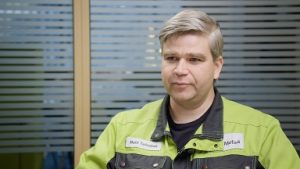 Smart and automated oxygen plant
Smart and automated oxygen plant
Metsä Fibre’s bioproduct mill began operations in August 2017 and quickly reached its nominal production capacity. The mill produces approximately 1.3 million tons of pulp annually.
At this point, the cooperation between Metsä Fibre and Linde has been agreed to last for 15 years. The most important function of the plant is to guarantee the oxygen supply necessary for the bioproduct mill. For this reason, the investment in operational reliability of the oxygen plant has been exceptionally heavy. The plant’s operation is fully automated in practice. If problems were to occur in the operations of the oxygen plant, they would also reflect directly on the operations of the bioproduct mill.
Therefore, the oxygen plant is smartly designed. Critical parts of the plant are built as double parts to ensure the uninterrupted production of oxygen and the operational reliability of the plant. If problems occur in one of the plant’s parts, the liquid oxygen backup system enables the operations to continue as normal. When the process control system detects a potential fault, the shut-down of the plant is automatically started and the use of backup system begun. The oxygen plant is fully automated, and its operations are controlled from Linde’s remote control centre in Avesta, Sweden.
“The plant has operated very well since the start. We have not received any complaints about the operations, and everything has gone according to plan,” says Niemi with satisfaction.
The oxygen plant replaces a constant stream of vehicles
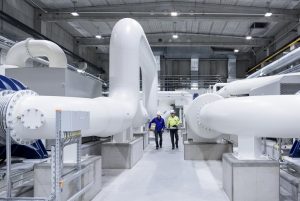 Oxygen is one of the chemicals used by the bioproduct mill, so its uninterrupted delivery is a requirement for pulp production to continue. With regard to its energy consumption and environmental effects, oxygen produced onsite is the least expensive way to deliver large quantities of gases for industrial processes. At the same time it also adheres to Linde’s and Metsä Fibre’s values of sustainability.
Oxygen is one of the chemicals used by the bioproduct mill, so its uninterrupted delivery is a requirement for pulp production to continue. With regard to its energy consumption and environmental effects, oxygen produced onsite is the least expensive way to deliver large quantities of gases for industrial processes. At the same time it also adheres to Linde’s and Metsä Fibre’s values of sustainability.
“A bioproduct mill needs a great amount of oxygen in an hour. 35-40 tons of oxygen fit into one tanker. The area would have a constant stream of tankers daily without the oxygen plant,” Niemi believes.
In addition to pulp, the bioproduct mill produces a lot of renewable energy. Indeed, the oxygen plant receives all the electricity necessary for its operations directly from the same industrial site.
“The most important thing for us is that our customers can trust that we are managing things well and the plants run smoothly. Up to now, everything has been a success – this is a solid foundation on which to continue building our cooperation,” says Niemi.
Text: Enni Saikkonen, Merja Kumpulainen
Foto: Petri Krook


